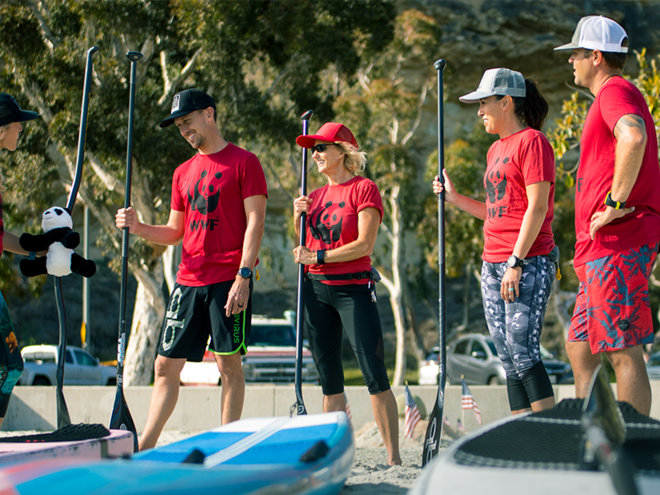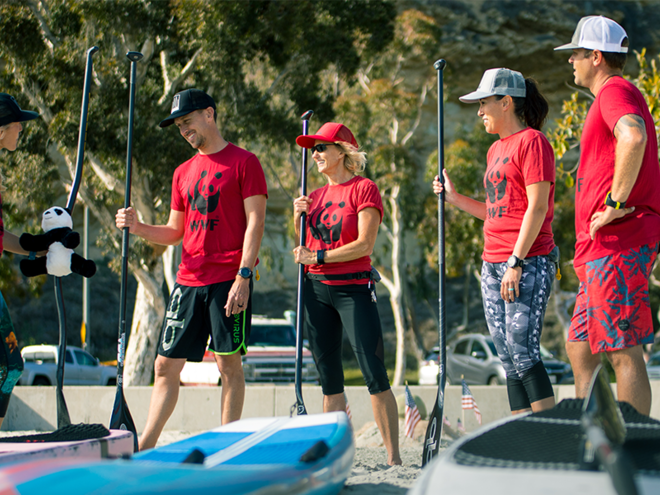How to standup paddle board—and help wildlife at the same time
Published by the World Wildlife Fund

Standup paddle boarding promises a unique and harmonious way to explore our planet’s rivers, lakes, oceans, and more. And while the sport may intimidate first timers, it becomes far less daunting with a few quick tips and tricks in mind.
Former professional standup paddle boarder Anthony Vela offers some insight to get newbies started.
The best part? Once you’ve got the hang of it, you can use your new standup paddle skills to fundraise for the wildlife and wild places that you love. Enjoy a day on the water with other paddlers—beginners, pros, and everyone in between—at WWF’s Panda Paddle, sponsored by Target, on Oct. 20 at Bonita Cove in San Diego.
Take a look!
1. Take a lesson
This may seem like a no-brainer, but it’s worth highlighting again. A certified instructor can offer you simple instructions that will make your first time on a standup paddle board successful—and more fun. Many accredited businesses that rent out the equipment you need to get started also offer lessons; the key is to confirm that the instructor went through a training and certification process before heading out on the water.
2. Use the right equipment
One of the reasons standup paddle boarding is such a fast-growing sport is that anyone can do it, anywhere there is water. Just remember that the equipment is not one-size-fits-all. Boards and paddles come in a variety of shapes and sizes, and you need to choose the right ones. Think of it like riding a bike—an adult would struggle to ride a child’s bike, and vice versa. Wider boards provide stability and work well for beginners, while narrower boards require precise balance and move faster. A certified instructor from an accredited business can match you with the right equipment.
Getting started on the board starts with using the right equipment.
Posted by World Wildlife Fund on Friday, September 14, 2018
3. Learn in flat water
The easiest place to paddle is in calm, flat water. Lakes, bays, and harbors are best because there are no waves, currents, or other factors that make the water choppy. Mornings are usually the best time to paddle because there’s typically less wind. You will have much more fun in water that looks like a sheet of glass—nice and smooth. As you improve your paddling skills, waves, wind, and even currents in rivers can add excitement.
4. Have fun
Lastly, keep in mind that it is scientifically proven that you have 80% more balance when you are smiling. (Okay, maybe we made that part up.) But it is true that you don’t need to be an expert standup paddle boarder to have a great time on the water. Falling off and getting back up again is A-Okay and all part of the fun!
5. Paddle for wildlife
There’s no better time to practice standup paddling than at WWF’s Panda Paddle! Panda Paddle blends a world-class standup paddle boarding competition with a world-changing cause: protecting the natural world. Whether you’re just starting out or already an expert paddler, Panda Paddle is a great way to hone your skills while protecting and preserving nature.
Join us Saturday, Oct. 20, at Bonita Cove in San Diego for WWF’s Panda Paddle!
Read the full article at: http://feedproxy.google.com/~r/WWFStories/~3/RHV_5CbVPdo/how-to-standup-paddle-board-and-help-wildlife-at-the-same-time


